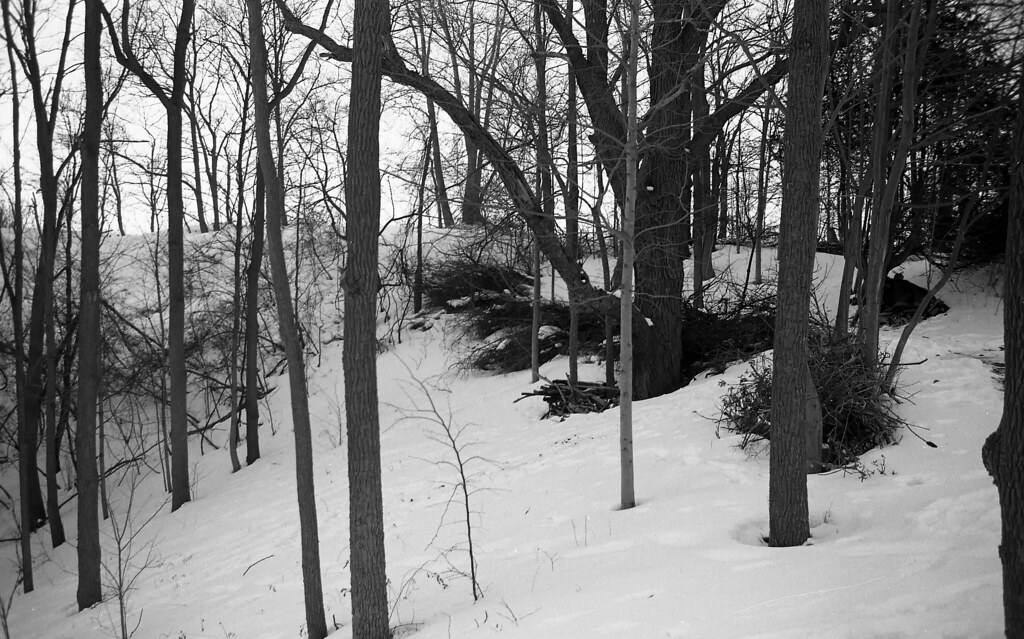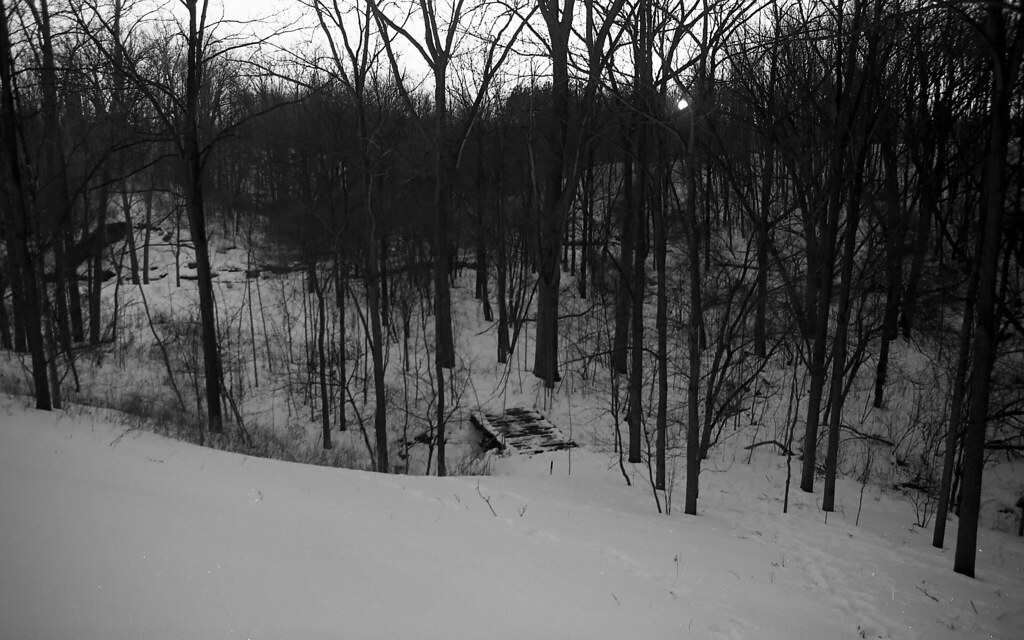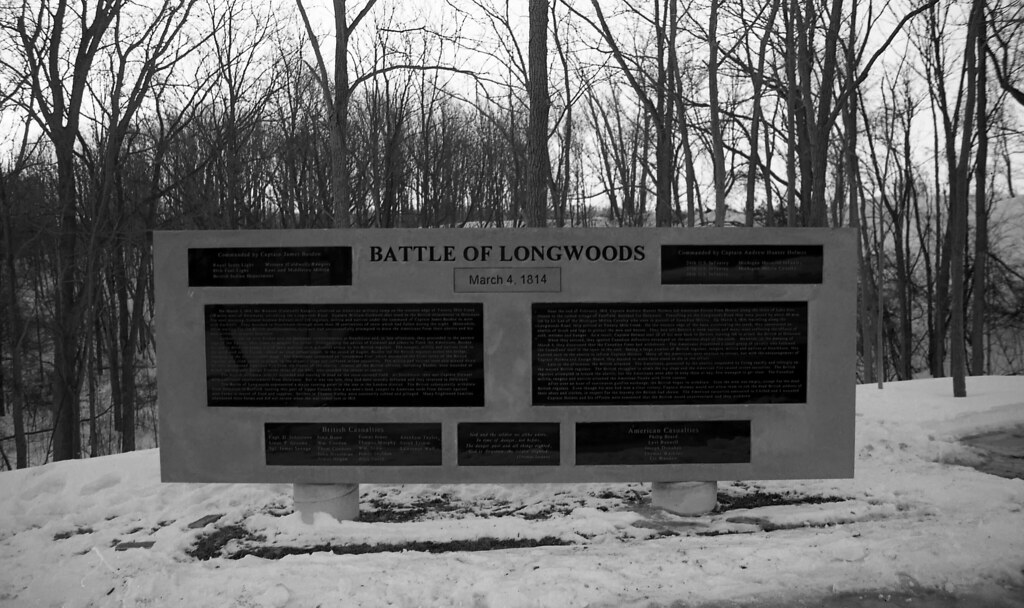After the disastrous defeat at the Battle of the Thames the stretch of western Upper Canada, some 200 miles became nothing more than a no-man’s land between the American garrison at Amhurstburg and the British stronghold at Burlington Heights. Neither side had the will or manpower to secure the area so it devolved into skirmishes between the few British Regulars still in the area along with local Militia and Native warriors still allied with the British and Canadian Population and the American raiding parties conducting economic warfare in the area, destroying crops, mills, and storehouses containing food and goods bound for the armies in the center and the east. But the British had not completely abandoned the region, in December of 1813 they established two advance outposts about halfway between Burlington Heights and Amhurstburg. The first was at the small settlement of Delaware (outside of modern day London, ON) and a second at Port Talbot on the shores of Lake Erie. The Americans had also established their own outposts, the main one located in Chatham and begun construction of a new fort, Fort Malden on the ruins of Fort Amhurstburg (ordered destroyed by General Procter during his retreat in September 1813). The British upon discovering the American outpost at Chatham sent their own forces in December 1813 to destroy it, and succeeded in doing so.

The historical marker on Battle Hill as the spot is now called
After gathering his own forces, Lieutenant-Colonel Anthony Butler, commander of the American garrison at Fort Malden tasked Captain Andrew Holmes to seek out the British outposts in the region and destroy them in retaliation for the destruction of the Chatham outpost. Holmes gathered a force of 180 men from the 24th, 26th, 27th and 28th US Infantries, attaching mounted militia troops from Michigan, and some irregular raiders who knew the area. In addition to the infantry he had two six pound field guns with him. Departing on the 21st of Febuary, 1814, Holmes’ column heading south east, aiming to take out the closer outpost at Port Talbot. The column had to abandon the guns near Pointe au Pelee du to the swamp like ground in the area. As he drew closer to Port Talbot he clashed with a group of Canadian Militia who were in the area. After running them off, he believed they went to Port Talbot to warn the British there, so Holmes not wanting to risk a prepared force adjusted his route north to head to Delaware. Where the Canadian Militia had instead gone to.

Modern field fortifications for the reenactment of the battle that took place on March 4th, 2014
Unaware of this, Holmes continued his route towards Delaware, by the 2nd of March he was within 15 miles of the outpost, but his force had been reduced to 164 men due to the cold and dwindling supplies. The American camp was approached by a local resident, friendly to the American cause. He alerted Holmes that the force of militia they had encountered had warned the British outpost who had sent for reinforcements, and now a force of 300 British troops were within an hour’s march of the outpost. Against the judgment of his other officers, Holmes pulled his force back to the Twenty Mile Creek and had them setup field fortifications overlooking the creek’s ravine and the road.

Unlike some battlefields from the war, the Longwoods site remains pretty much as it would’ve appeared 200 years ago
One the 4th of March a force of British irregular militia known as Caldwell’s Western Rangers engaged Holmes’ force in a bid to draw them out into the open. And it worked, Holmes ordered the pursuit of the Rangers at least until his own advance scouts warned him of a British ambush after they had given chase for five miles and pulled back. The British force at Delware was commanded by Captain Stewart of the 1st Royal Scots, Stewart had left command to his second, Captain James Lewis Basden while he went to confer with Colonel Matthew Elliot of the Essex Militia to get more troops to support them. Basden upon learning of the American force ordered an immediate attack despite not knowing anything about the American strength or position. He ordered the full force to march, the force had 101 troops from the 1st Royal Scots, 45 from his own regiment, the 89th of Foot, supported by 44 native warriors and 50 troops from Caldwell’s Western Rangers and the Loyal Kent Volunteers. As the British Column approached the Twenty Mile Creek by 5pm on the 4th, Basden deployed the Native Warriors to the south and the Volunteers and Rangers to the North to engage the American flanks, while he deployed the Regulars in a line to fire on the American center. The volley fire had little effect on the fortified Americans, forcing Basden to charge the American line. However he had to force the column along a narrow bridge, giving the Americans the capability of concentrating their fire on the assault column, and firing down into the British force caused numerous casualties. Undaunted Basden himself led the charge up the ravine slope, earning him a wound in the leg, unable to scale the icy slope the British soon fell back under heavy fire and took shelter in the trees continuing to fire with little effect. The militia forces on the flanks had better luck, but lacked the numbers to effectively force the Americans back, soon fell back themselves along with the Natives. By 6:30 it was over, Basden was wounded, Captain Johnson of the 1st Royal Scots was dead, and command left to Ensign Mills of the 89th who ordered the retreat back to Delaware.
Holmes realizing that he could not take either Port Talbot or Delaware fell all the way back to Detroit, and the British, fearing a larger American force to follow up retreated from Delaware as well. Returning the west again to a no-man’s land. Holmes would be promoted to Major and participated and died during the Battle of Mackinac Island later in 1814. Captain Basden recovered from his wound and continued to serve, eventually gaining command of what was left of the 2nd Battalion of the 89th of Foot and even survived the Battle of Lundy’s Lane. In the long run the Battle of Longwoods was a minor skirmish in the grand scope of the war and only served to further illustrate both side’s unwillingness to secure territory in the west, having neither the will or the manpower to do so. The war by this point was over in the west, save for several more skirmishes during the last year of the war at Port Dover and Malcolms Mill. The battlefield today lays about 32 kilometers west of Highway 402 along old Highway 2. There’s a memorial cairn on “Battle Hill” and you can still see down into the ravine and survey the battlefield which lays pretty much as it did 200 years ago. Members of the Upper Thames Military Reenactment Society host an event on the first weekend in May to commemorate the battle, in 2014 they hosted an event on March 8th to commemorate the 200th anniversary of the battle. The photos taken for this blog were taken the day before the event.
Written with files from:
Guidebook to the Historic Sites of the War of 1812 Second Edition by Gilbert Collins – 2006 The Dundurn Group Publishers
Web: www.eighteentwelve.ca/?q=eng/Topic/108
Web: www.historicplaces.ca/en/rep-reg/place-lieu.aspx?id=13217
Photos: Nikon F4 – AF Nikkor 35mm 1:2D – Agfa APX 100 – Kodak Xtol (1+1) 9:45 @ 20C
